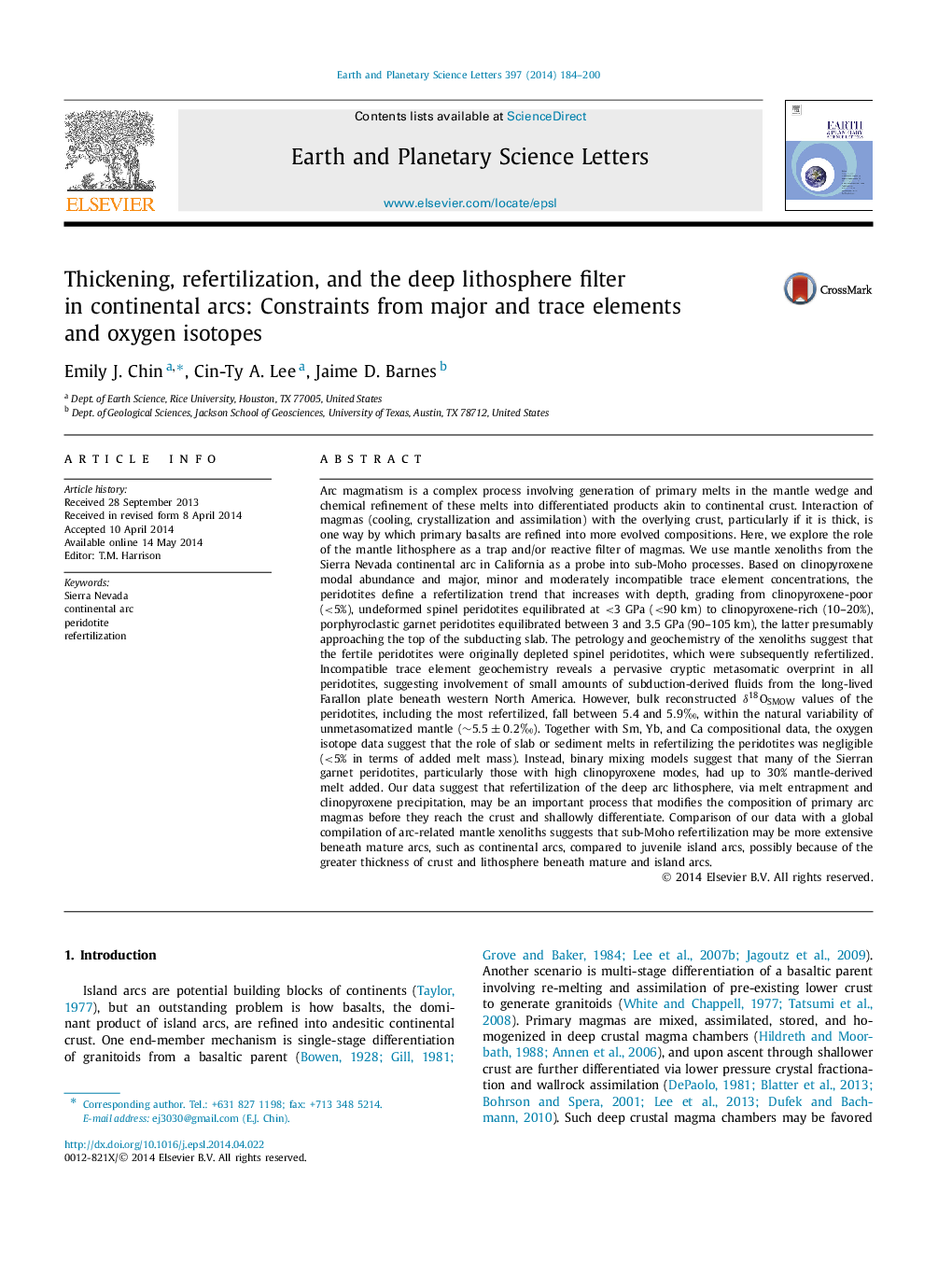| کد مقاله | کد نشریه | سال انتشار | مقاله انگلیسی | نسخه تمام متن |
|---|---|---|---|---|
| 6429380 | 1634759 | 2014 | 17 صفحه PDF | دانلود رایگان |
• Mantle peridotites from the Sierra Nevada, California record depth gradation in refertilization.
• Mantle-derived melt, rather than slab melt, is dominant refertilizing agent.
• Global data suggests thick arcs may have more fertile lithosphere compared to thin arcs.
Arc magmatism is a complex process involving generation of primary melts in the mantle wedge and chemical refinement of these melts into differentiated products akin to continental crust. Interaction of magmas (cooling, crystallization and assimilation) with the overlying crust, particularly if it is thick, is one way by which primary basalts are refined into more evolved compositions. Here, we explore the role of the mantle lithosphere as a trap and/or reactive filter of magmas. We use mantle xenoliths from the Sierra Nevada continental arc in California as a probe into sub-Moho processes. Based on clinopyroxene modal abundance and major, minor and moderately incompatible trace element concentrations, the peridotites define a refertilization trend that increases with depth, grading from clinopyroxene-poor (<5%<5%), undeformed spinel peridotites equilibrated at <3 GPa<3 GPa (<90 km<90 km) to clinopyroxene-rich (10–20%), porphyroclastic garnet peridotites equilibrated between 3 and 3.5 GPa (90–105 km), the latter presumably approaching the top of the subducting slab. The petrology and geochemistry of the xenoliths suggest that the fertile peridotites were originally depleted spinel peridotites, which were subsequently refertilized. Incompatible trace element geochemistry reveals a pervasive cryptic metasomatic overprint in all peridotites, suggesting involvement of small amounts of subduction-derived fluids from the long-lived Farallon plate beneath western North America. However, bulk reconstructed δOSMOW18 values of the peridotites, including the most refertilized, fall between 5.4 and 5.9‰5.4 and 5.9‰, within the natural variability of unmetasomatized mantle (∼5.5±0.2‰∼5.5±0.2‰). Together with Sm, Yb, and Ca compositional data, the oxygen isotope data suggest that the role of slab or sediment melts in refertilizing the peridotites was negligible (<5%<5% in terms of added melt mass). Instead, binary mixing models suggest that many of the Sierran garnet peridotites, particularly those with high clinopyroxene modes, had up to 30% mantle-derived melt added. Our data suggest that refertilization of the deep arc lithosphere, via melt entrapment and clinopyroxene precipitation, may be an important process that modifies the composition of primary arc magmas before they reach the crust and shallowly differentiate. Comparison of our data with a global compilation of arc-related mantle xenoliths suggests that sub-Moho refertilization may be more extensive beneath mature arcs, such as continental arcs, compared to juvenile island arcs, possibly because of the greater thickness of crust and lithosphere beneath mature and island arcs.
Journal: Earth and Planetary Science Letters - Volume 397, 1 July 2014, Pages 184–200
